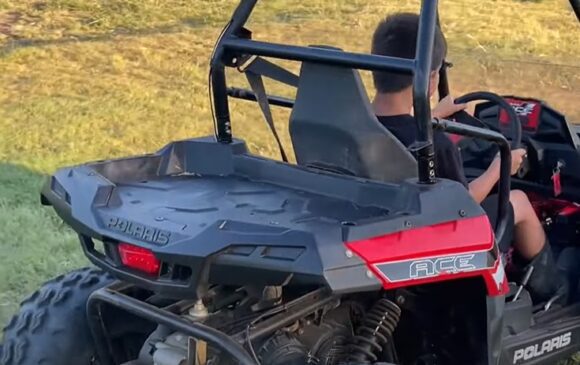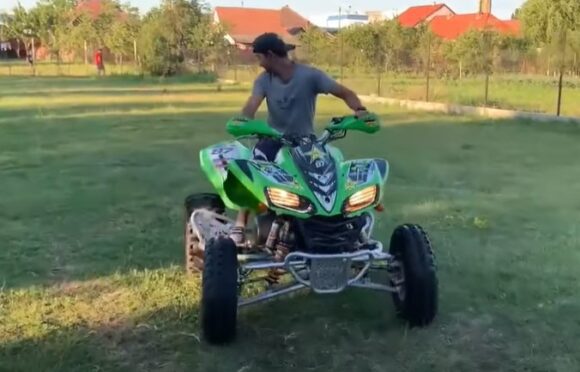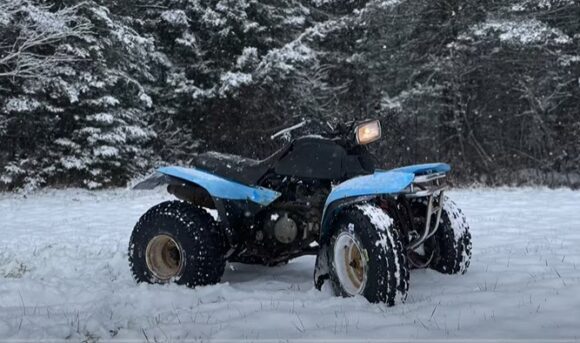An all-terrain vehicle made specifically for young riders, the Polaris Ace 150 has a 149cc engine, an automatic gearbox, and an electric start. Though it has a great range of facilities, it is not free from issues, and often it has been brought up with multiple problems that users face.
The most frequent issues in the Polaris Ace 150 include the followings:
- Overheating
- Throttle Reaction
- Brake Issues
The remainder of the article will go into more detail on each issue. It will also explain how to identify it, deal with it, and how much it will cost to fix. Continue reading this article to learn more.
Polaris Ace 150 Problems

Let’s dig deep into these problems and learn how to fix those effectively.
1. Overheating Problems
The most frequent cause of overheating is overuse. Overheating, though, could be a sign of a few additional issues that you should investigate for the health of your car.
Second, the cooling system’s thermostat valve could be damaged or completely closed. If so, the engine won’t be cooled when it is supposed to be cooled by the device.
Also, there is a chance that the ventilation system itself is the issue. It is conceivable because the cooling system has leaks, which prevent it from having enough coolant to work correctly.
If not, it would need to be changed, or it might have air trapped inside. A damaged radiator, a blown head gasket, or improper engine tuning are a few more signs.
The Fix:
Keep in mind that prevention is the first step. Keep your radiator’s screen clean whenever you can. Additionally, be sure to frequently check to see if the cooling system needs to be refreshed.
To find out how frequently you must change the fluid, see your vehicle’s owner’s manual or the manufacturer’s guidelines, but typically it is a matter of years.
Otherwise, check that your ATV is prepared for the trial by going through the following list of potential issues:
- Check that the battery is correctly placed and charged.
- Inspect the spark plug’s functionality and proper installation.
- Assess your gasoline supply and look for any fuel leaks.
- To ensure that the ATV receives adequate airflow, clean the air filter.
- Evaluate the functionality of each component of the engine, such as the head gasket, cylinder walls, and piston ring.
- Confirm that the vehicle’s fuel is not too old.
2. Throttle Reaction
If your Polaris Ace 150’s components or connections are submerged in water, the vehicle may lose throttle.
If the cable is old or worn out, it could have a sticky throttle. At the same time, others have improper throttle play distance, which makes the throttle malfunction.
The Fix:
If you have trouble with the throttle response, you can try replacing or shimming the velocity sensor. You can ask an expert technician for assistance.
If the machine is still under warranty, the dealer should resolve the problem. A replacement OEM speed sensor for a Polaris ace150 costs about $39.
An OEM throttle cord replacement costs about $73.99 if you need to replace a broken one.
3. Issues with Brakes
An erroneous parking brake setting may be to blame for this. While the engine warning light is intermittently flashing, it is going to keep sending codes while thinking the accelerator is on the brake.
The brake light may also flash while the brake is not pressed and may frequently enter limp mode.
Another common mistake among bikers is installing the incorrect brake handle. The brakes may bleed as a result of this.
The main brake line’s latch may have air trapped inside it, which is one of the most frequent causes of brake failure.
The Fix:
Beneath the right rear tire, a parking brake cable needs to be adjusted. Two nuts are below the bracket, while one is above it.
After allowing the top one to release a few turns, tighten it to the lowest, then the bottom two. That should make the problem go away.
Prior to setting up a new brake handle, it is crucial to pay close attention and make sure it is appropriate for the ATV. Holding the lever firmly while releasing the nuts will allow the air to escape from the brake line.
4. Engine Issues
You can encounter problems like a miss, a backfire, an engine that starts but won’t idle, an engine that idles but won’t rev, overheating, or a power loss.
The following issues you can face in your engine:
- The engine does not start.
- It is becoming sluggish but not switching.
- The engine commences but won’t run.
- The engine is running but not accelerating.
The Fix:
Try to see whether an excessive gas flow has not flooded the engine. Observe the components of the fuel system as well, such as the fuel pump, filter, spark plug, and tank vent. Make sure your tank is full.
Check the battery, solenoid, and starter motor for any potential issues. A seized engine, mechanical failure, or rust are a few examples of possible causes.
Clean or reinstall the air filter and other air intake components. Verify the throttle cable, TRS switch, ignition timing, and spark plugs. See the exhaust system, then turn the speed limiter back.
Examine the fuel system, the crankcase breather, and the air filter. Make that the fuel system and choke are appropriately adjusted. Inspect the cylinder for significant leakage as well.
5. Safety Issues
Neither a decent windscreen nor a roof is included with the Ace 150. The users may be in danger of face or bodily harm from flying objects as a result.
They may become exhausted from the wind blast, and dust and debris may irritate their eyes, divert their attention, and damage their vision. Furthermore, rollovers account for more than 50% of injuries.
The Fix:
You can fix this weakness by acquiring tailored tops to shield the occupants from objects like pebbles and fallen trees that could cause head injuries if they flip.
Additionally, you have a variety of windscreen choices, which includes full, full-tilting, half-fixed, half-folding, and rear windscreens.
The Ace 150’s entire windscreen is the ideal option as it protects the entire front of the ATV and shields the children from flying objects like debris.
How Good is Polaris Ace 150?
This For off-road ergonomics, tilt steering, a cozy bucket seat, and 5.7 inches of sliding seat adjustability for growing children are included.
With the help of the four-mode digital speed limitation, parents can also regulate vehicle speed and account for the level of driving expertise of young drivers. 10 mph, 15 mph, 22 mph, and 29 mph are the options.
The front suspension travel is 5 inches, and the rear suspension travel is 6 inches, so they can both absorb yard and trail bumps. Also, the pleasurable ride, reliable starting, enhanced idle quality, and a clean linear throttle response is all features of the 149cc engine.
The younger driver can also overcome off-road obstacles thanks to its nine inches of high ground clearance. Young drivers can easily hit the trails with this model courtesy of its standard electric start and controls that resemble those used in automobiles.
Polaris Trailblazer 250 Problems


